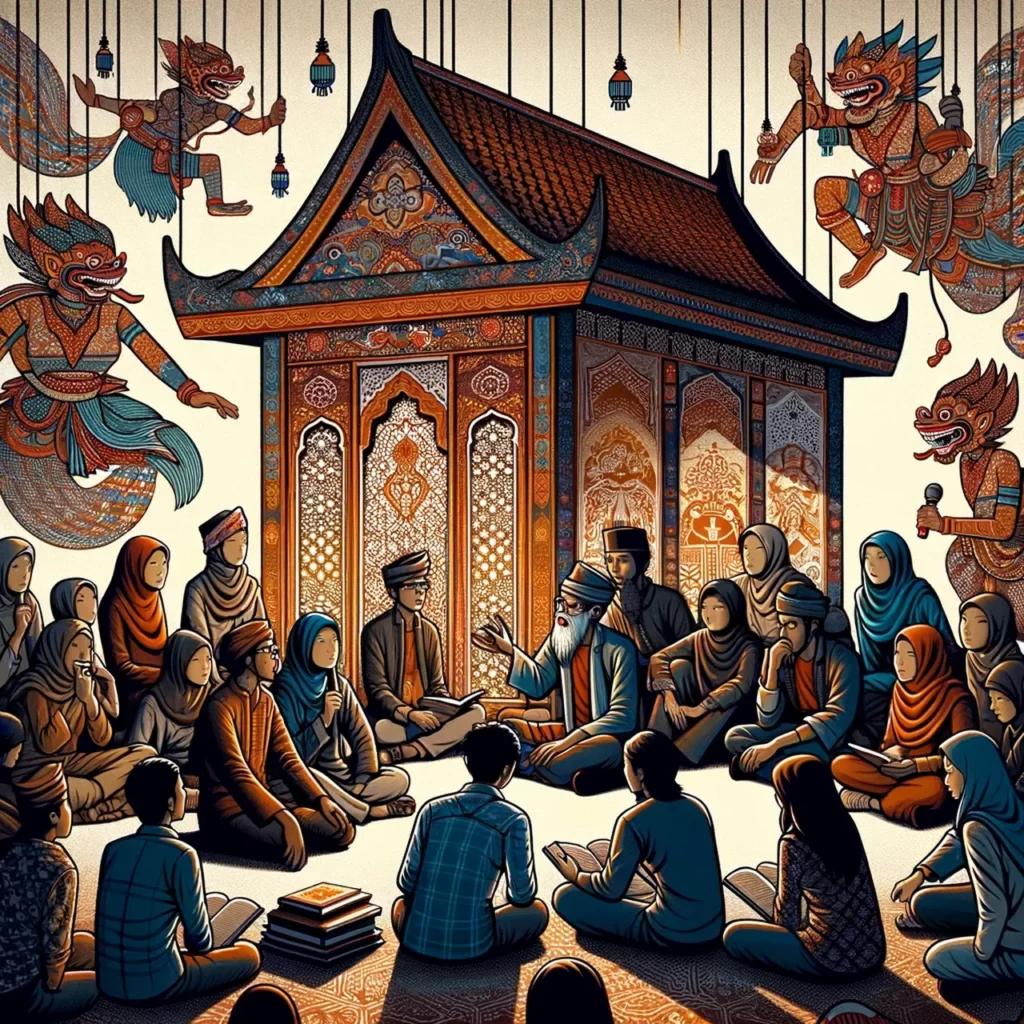
Exploring the Mysteries of Abang Temple
Nestled in the lush landscapes of Sleman, Yogyakarta, the Abang Temple stands as a testament to the region’s rich historical tapestry. This ancient site, steeped in mystery, has recently gained attention due to its depiction as Jeng Yah’s Tomb in popular media. Offering a unique glimpse into the architectural and cultural heritage of Java, the temple differs from its counterparts with its distinctive red brick structure. As a portal to the past, the Abang Temple invites travelers and history enthusiasts alike to explore its enigmatic grounds and uncover the stories embedded within its walls.
The History of Abang Temple
Abang Temple, a historical gem in Sleman, Yogyakarta, has long intrigued historians and travelers alike. Believed to have been constructed during the era of the ancient Mataram Kingdom, the temple’s origins are estimated to date back to the 9th or 10th century. This estimation is partly based on a found inscription dating to 872 AD, although it remains unclear if this date marks the temple’s construction.
Distinct from the grand multi-tiered structures typical of Javanese temples, Abang Temple is unique for its modest, red-brick architecture. The temple’s name, ‘Abang’, meaning ‘red’ in Javanese, directly reflects this characteristic. Over the centuries, much of the temple has succumbed to time, leaving behind a collection of ruins that continue to captivate visitors.
The temple gained renewed attention and significance after being featured as the setting for Jeng Yah’s Tomb in the series “Gadis Kretek”. This has not only highlighted its cultural importance but also sparked a renewed interest in its historical narrative. Today, Abang Temple stands not only as a historical site but also as a cultural icon, bridging the past with contemporary media and storytelling.
While much of its history remains shrouded in mystery, the Abang Temple continues to be an important subject of study for archaeologists and historians. Efforts to preserve and study the site are ongoing, contributing to our understanding of Java’s rich cultural and historical landscape. The temple, with its simple yet profound presence, continues to be a beacon of historical curiosity and cultural pride for the people of Yogyakarta.

Jeng Yahs Tomb in Cultural Context
The depiction of Jeng Yah’s Tomb in popular culture, particularly in the series “Gadis Kretek”, has brought a unique aspect of Javanese culture into the limelight. This representation has sparked interest in the way traditional Javanese beliefs and practices are intertwined with the concept of tombs and the afterlife. In Javanese culture, tombs are not merely resting places for the deceased but are often seen as links between the living and the spiritual world, embodying a deep cultural significance that transcends generations.
Jeng Yah, a fictional character in the series, has become a symbolic figure, representing the rich tapestry of Javanese folklore and history. Her tomb, set against the backdrop of Abang Temple, serves as a metaphorical bridge between the past and the present. It reflects the enduring influence of Javanese culture and traditions in contemporary Indonesian society.
The series has also highlighted the role of women in Javanese history and mythology, with Jeng Yah’s character being a focal point. This portrayal has opened up discussions about the representation of women in Javanese folklore and their impact on current cultural narratives. Through this character and her tomb, the series has offered a new perspective on the historical and cultural roles women have played in Java.
The impact of this portrayal extends beyond entertainment, influencing how contemporary Indonesians view their cultural heritage. It has encouraged a renewed interest in exploring local history and folklore, fostering a deeper appreciation for Indonesia’s diverse cultural landscape. Jeng Yah’s Tomb, as portrayed in the series, thus becomes more than a mere plot element; it is a cultural symbol that resonates with the rich history and ongoing evolution of Javanese culture.

Read Also: Exploring Indonesian Old Towns and History
Yogyakarta’s Hidden Heritage Gems
Yogyakarta, a city renowned for its rich cultural and historical tapestry, is home to numerous lesser-known heritage sites that are as captivating as its famous landmarks. Among these, the Abang Temple, though modest in size, stands out for its unique red-brick construction, a stark contrast to the more common grey stone of Javanese temple architecture. This temple, along with others scattered across the region, forms an integral part of the city’s cultural heritage, offering a glimpse into the past that is often overshadowed by more prominent attractions.
These hidden gems of Yogyakarta are steeped in local folklore and history, each telling a unique story of the city’s past. For instance, sites like Jeng Yah’s Tomb, though fictional in nature, are based on real cultural beliefs and practices, embodying the spiritual depth and narrative richness of the region. These sites are not just architectural marvels but are also repositories of the area’s intangible heritage, such as traditional crafts, music, and dance.
Exploring these lesser-known sites provides a more intimate and authentic experience of Yogyakarta’s heritage. Visitors often find themselves walking through quiet villages, engaging with local artisans, and experiencing the daily rhythms of life that have remained unchanged for generations. This journey through the hidden heritage of Yogyakarta is as much about discovering the city’s physical landmarks as it is about connecting with its living culture and traditions.
As interest in cultural tourism grows, these hidden heritage sites of Yogyakarta, including the likes of Abang Temple, are gaining the recognition they deserve. Efforts to preserve and promote these sites are increasing, ensuring that they continue to tell the stories of Yogyakarta’s rich history to future generations. This not only helps in conserving the physical structures but also in keeping the cultural narratives and traditions alive, enhancing the cultural fabric of the city.

In conclusion, the exploration and depiction of Jeng Yah’s Tomb in popular culture have shed light on the rich and multifaceted heritage of Yogyakarta. This site, though fictional, represents a deeper cultural significance, embodying the traditions, beliefs, and historical narratives of the region. It has not only captivated the imagination of audiences but has also prompted a renewed appreciation for the lesser-known aspects of Yogyakarta’s cultural landscape. As a symbol of the city’s storied past and vibrant present, Jeng Yah’s Tomb stands as a testament to the enduring allure and relevance of cultural heritage in contemporary society.

